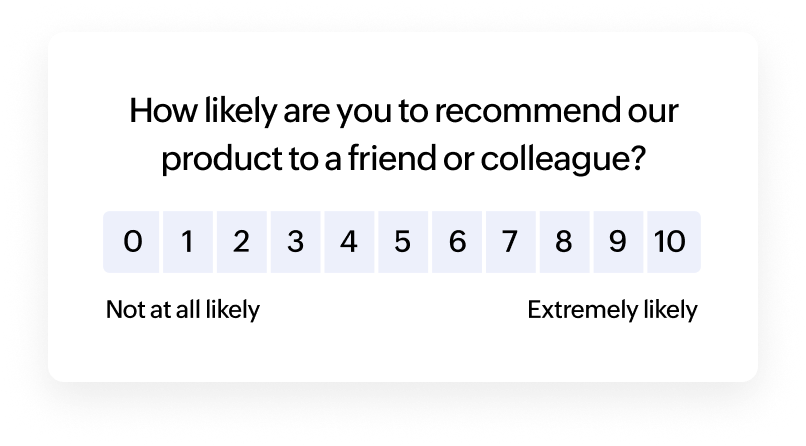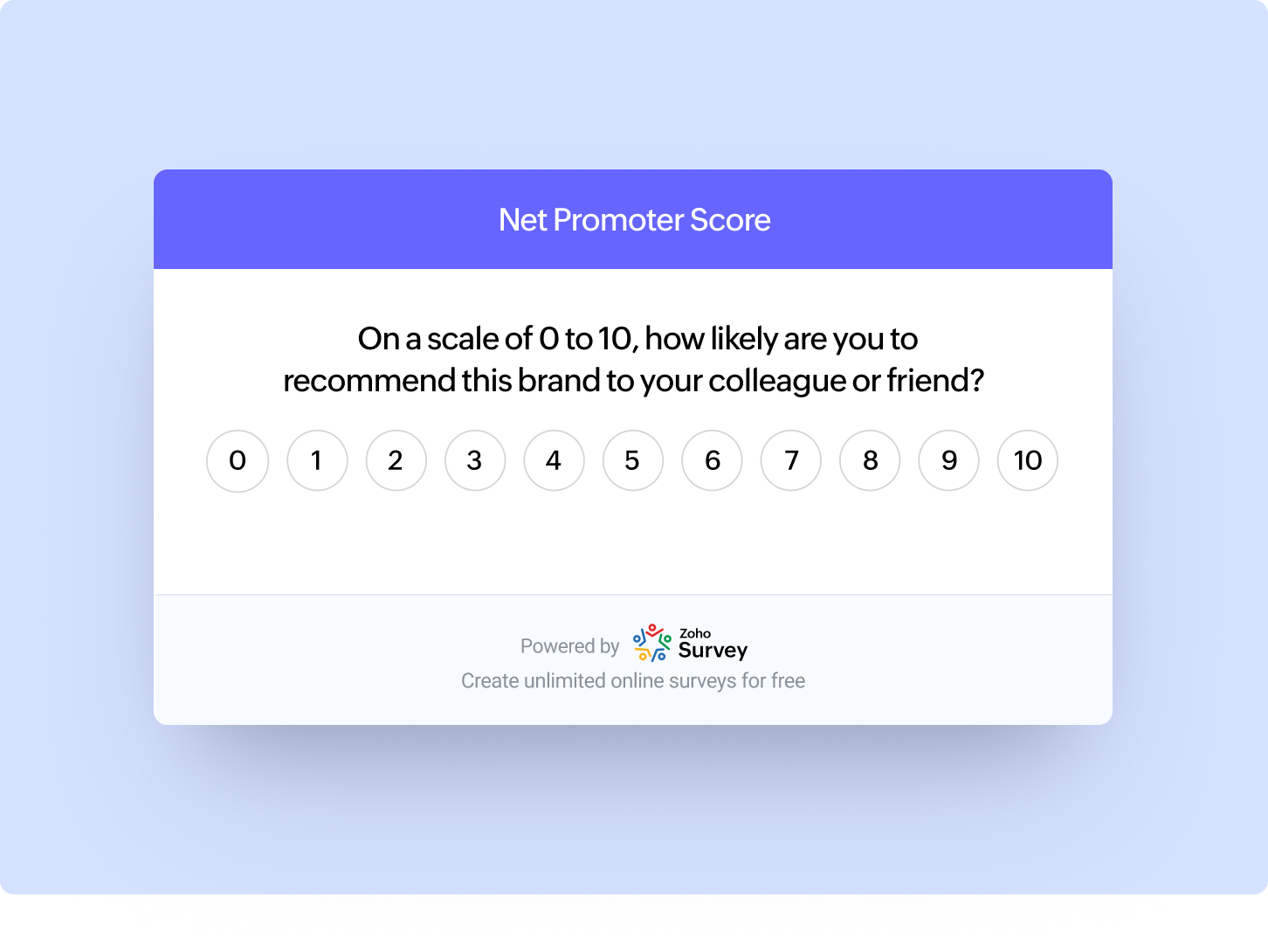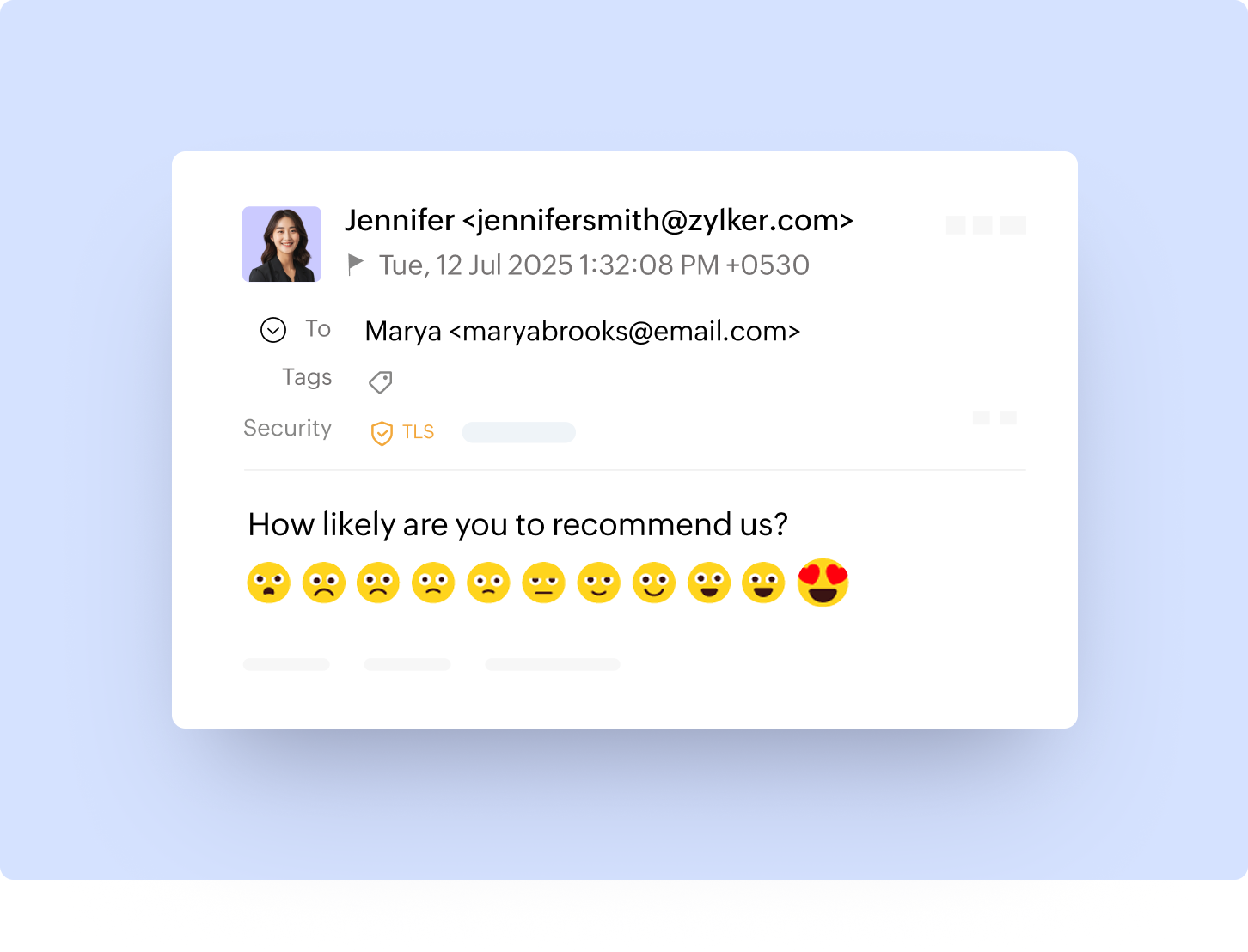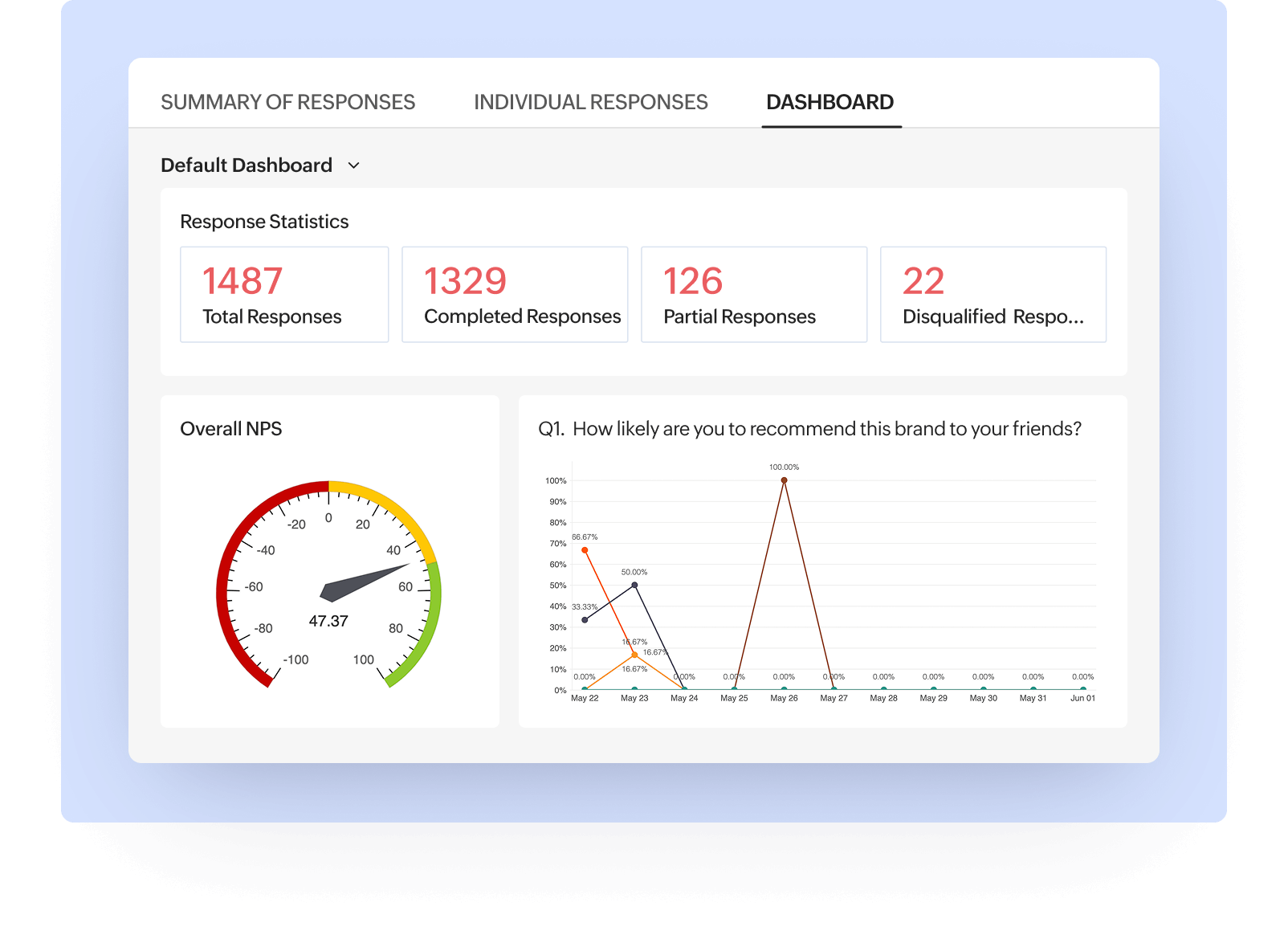How to interpret the NPS scale
Understanding the NPS scale is the first step to unlocking customer loyalty insights. The scale ranges from 0 to 10, but each category provides unique insights into customer sentiment. Here’s how it breaks down:
Promoters (9–10)
These customers are loyal advocates who don’t just love your brand; they champion it. They’re the ones spreading positive word-of-mouth and fueling your growth.
Passives (7–8)
Content but not captivated, passives may stick around but won’t actively promote your brand. Think of them as neutral territory—safe, but not growing your influence.
Detractors (0–6)
These dissatisfied customers are at risk of leaving and could damage your reputation with negative reviews or feedback. Addressing their concerns is essential to turning things around.
How to evaluate NPS
Measuring your Net Promoter Score is one thing, but understanding what it means is another. Here are two approaches to evaluate your score:
Absolute method
The absolute method uses predefined thresholds to evaluate your NPS without external comparisons:
Above 0 : A positive score means you have more Promoters than Detractors—a healthy sign of customer satisfaction.
50 and above: This is considered excellent and suggests strong loyalty.
100: A perfect score, where every customer is a Promoter, is rare but considered the gold standard.
This method helps you assess your score based on universal benchmarks, no matter the industry.
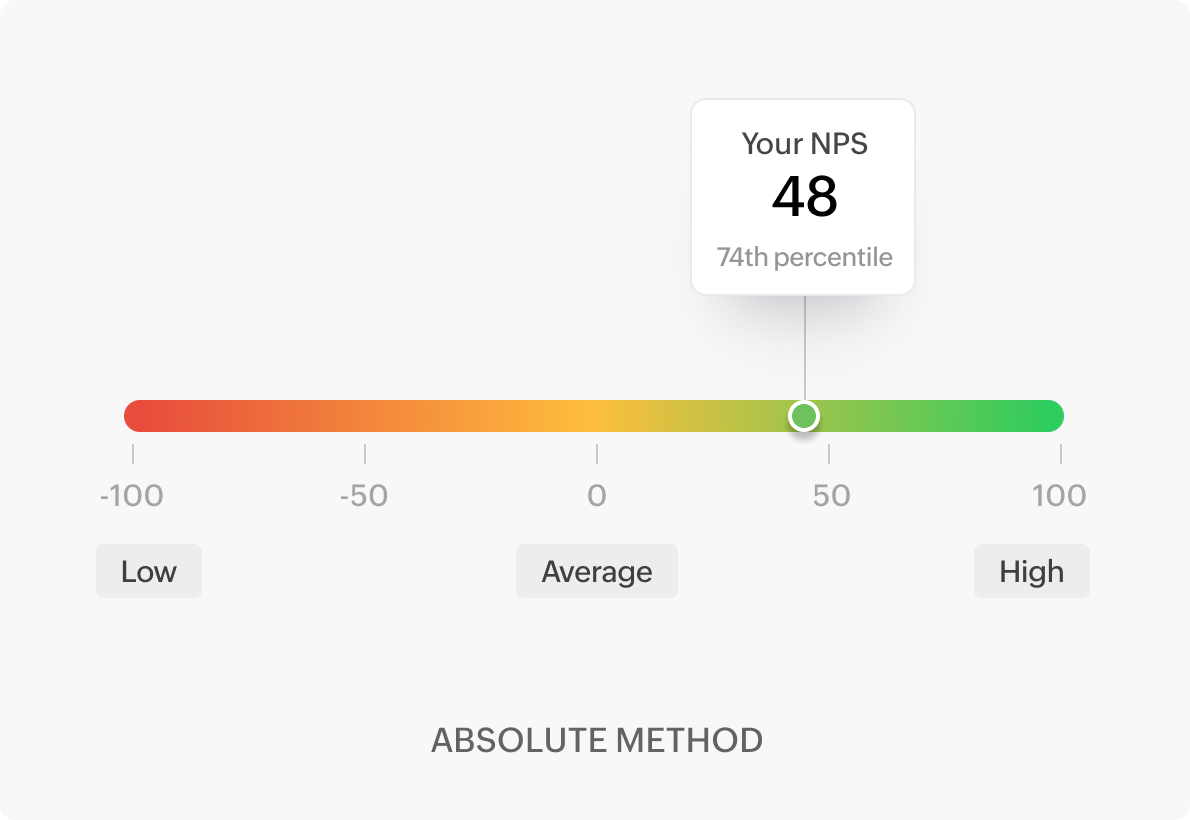
Relative method
The relative method compares your NPS to external benchmarks, like industry averages or competitors’ scores:
Industry standards: Different sectors have unique NPS norms. For instance, a score of 30 might be exceptional in one field but average in another.
Competitor analysis: Comparing your NPS to competitors provides insights into your market position and opportunities for growth.
This approach offers context, showing how your performance stacks up in the real world.
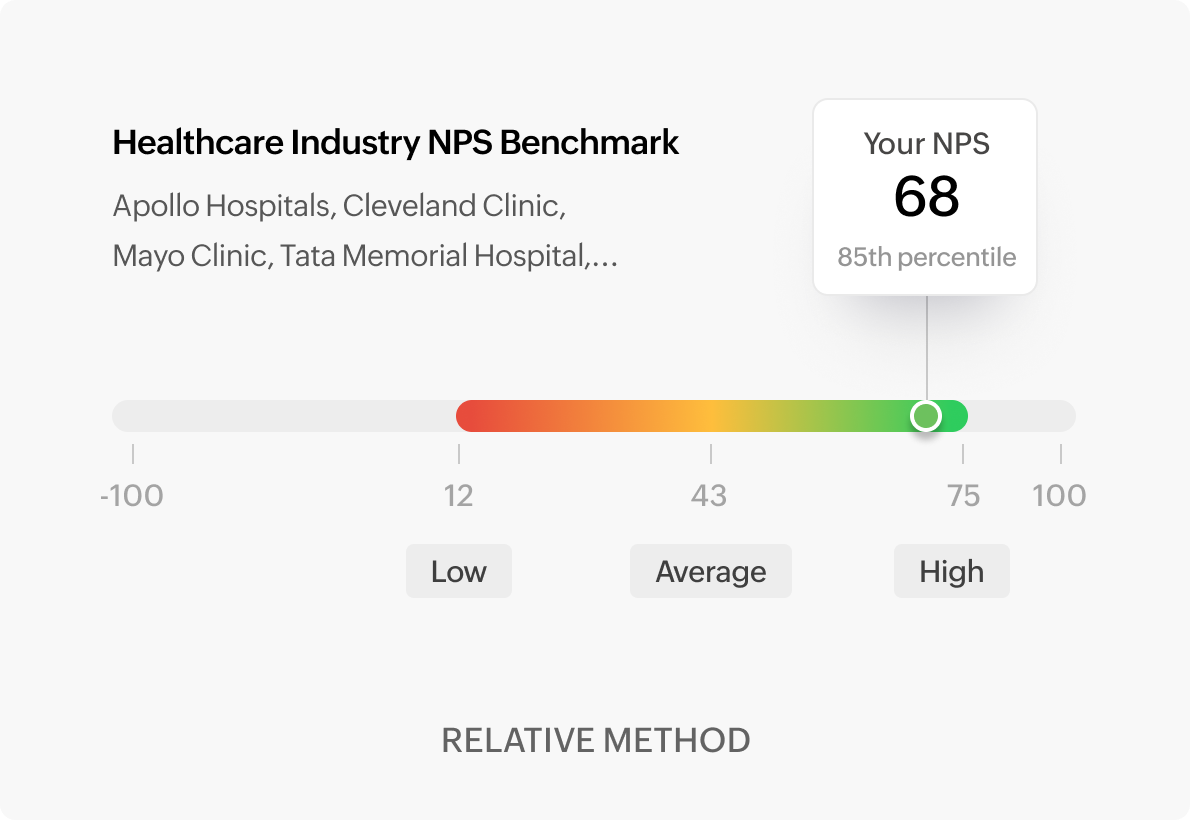
Applications of the NPS
Net Promoter Score is a tool you can apply across teams and decisions. Here’s where it really shines:
Monitoring brand health
Keep a pulse on how customers perceive your brand over time.
Customer segmentation
The NPS categorizes your customers into three key groups—promoters, who are loyal and enthusiastic; passives, who are content but not particularly engaged; and detractors, who are dissatisfied and at risk of churning.
Improved customer support
Measure the effectiveness of service interactions and refine support quality.
Benchmarking & competitive analysis
Compare your score to industry standards to see where you stand and how far you can go.
Applications of the NPS
Net Promoter Score is a tool you can apply across teams and decisions. Here’s where it really shines:
What is relational NPS (rNPS) ?
Relational NPS measures overall customer loyalty by asking about their likelihood to recommend your brand. It’s typically conducted periodically to gauge long-term trends in customer sentiment. For example, you can send quarterly NPS surveys to your customer database to track satisfaction over time.
What is transactional NPS (tNPS)?
Focused on specific interactions, transactional NPS evaluates customer sentiment after key touchpoints—like a product purchase or customer support interaction. It provides insights into how individual experiences affect loyalty.
What is employee NPS (eNPS)?
Not limited to customers, NPS can measure employee satisfaction also. eNPS assesses how likely your employees are to recommend your organization as a great place to work, offering insights into workplace culture and engagement. For example, you can send quarterly eNPS surveys to staff to gauge morale and identify areas for improvement.
Measure and improve your NPS in three easy steps
Zoho Survey makes tracking and improving your Net Promoter Score simple and effective. Here’s how:
- Step 1
Get started with ready-to-use templates
No need to start from scratch. Choose our fully customizable NPS survey template designed to help you ask the right questions and collect meaningful feedback in minutes.
- Step 2
Distribute surveys effortlessly
Reach your audience where they are. Send surveys via email, embed them on your website, or use offline methods like kiosks for in-person feedback. Zoho Survey offers highly flexible email scheduling options, allowing you to send surveys at optimal times and automate follow-ups for better response rates.
- Step 3
Analyze results with powerful tools
Turn data into insights with Zoho Survey’s advanced analytical features. Use dashboards to benchmark your NPS, identify trends with dynamic trend reports, and apply custom filters to uncover what truly matters.


